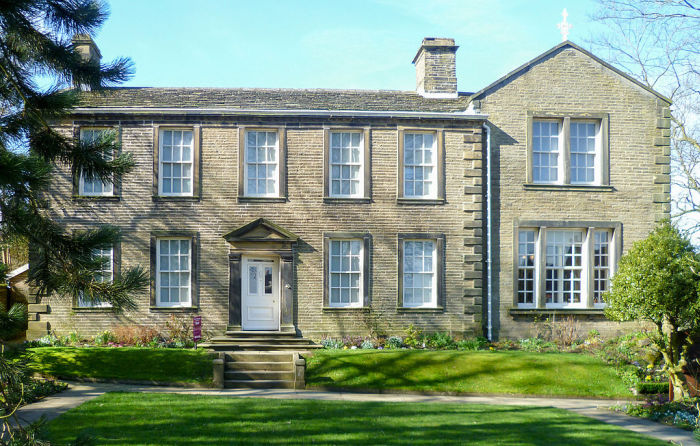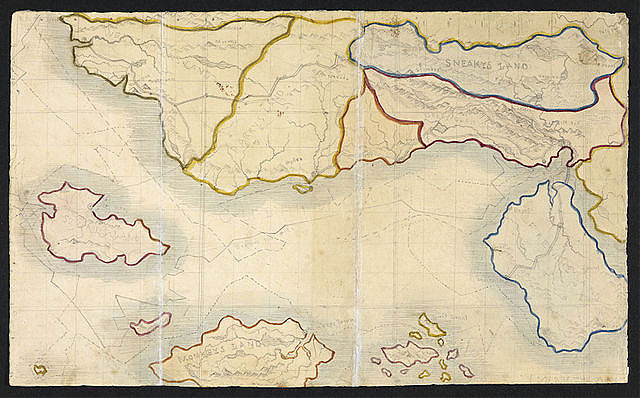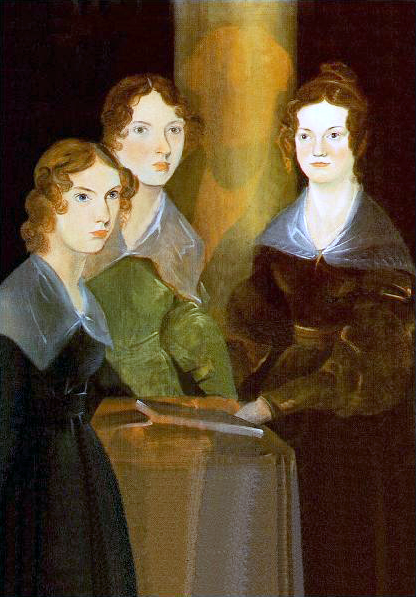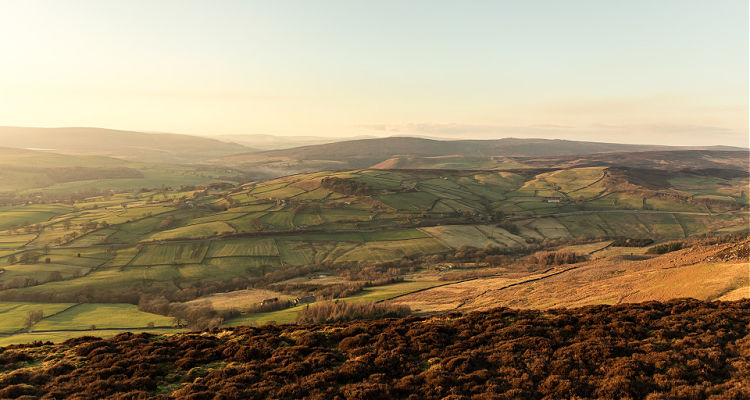Guide to the Brontës: Their Lives and Novels
Here’s a condensed (but still lengthy) introduction to the famous literary Brontë family, in particular the novelists Charlotte, Emily, and Anne. You’ll also find summaries of the seven novels published by the Brontë sisters, as well as publication order and my suggestion of which Brontë novel to read first!

Meeting the Brontë Sisters
There’s a little joke in academic circles that it’s impossible to tell which gets more attention: the Brontës’ novels, or the Brontës themselves! Although people always love to learn the stories of the authors whose stories they love, it does seem that the Brontë sisters are perennial favourites. This is probably because they have not one or two literary geniuses in the family, but three (what are the odds?), coupled with the fact that their family story is incredibly tragic.
I’m only one out of the three million people who have taken an interest in the Brontë family, but all the same, I would love for a little introduction to the Brontës to live here at Tea and Ink. Charlotte Brontë, in particular, is special to me. I’ve written before that her novel Jane Eyre is one of the books that made me fall in love with British literature to begin with. But it’s even more pivotal than that, because reading Jane Eyre empowered me to realise I could tackle absolutely any classic I wanted. For me, it flipped the switch from childhood reading to adult reading.
I encountered Villette a few years later in high school, and found it so beautiful and profound that it was the book I immediately turned to for comfort when my mother died last year.
I tried to pick up Emily Brontë’s Wuthering Heights when I was fourteen, but a friend (who hadn’t read it herself) assured me I’d be bored to tears. A year later I gave it a chance anyway, and was so engrossed during the week I read it that I was literally depressed until the book’s final resolution. We were in Santiago and I intentionally read it during a cold, smog-heavy week because I wanted to experience the novel’s bleakness. It definitely worked.
And then, years later when I was nursing my first child, I decided to discover Anne Brontë and began The Tenant of Wildfell Hall. You see, encountering the Brontës is a memorable and intensely personal experience. I know I’m not alone here…in fact, I daresay that’s the main reason why we love studying the Brontës so much, after all–their books have the potential to illicit a powerful response.
What was your first introduction to the Brontës? I hope you’ll share in the comments section below!

Haworth parsonage DeFacto, CC BY-SA 4.0, via Wikimedia Commons
Brontë Family Biography
The Brontës were a large family to begin with: eight people living in a small row house in Yorkshire, in the village of Thornton. The children in age order were Maria, Elizabeth, Charlotte, Branwell, Emily, and Anne. In 1820, when Anne was just an infant, the family moved to the parsonage of Haworth. The father, Patrick Brontë, would serve as curate there for the next 41 years, outliving his wife Maria and all six of his children.
Mrs. Brontë died of uterine cancer the year after their move to Haworth, and her sister Elizabeth (Aunt Branwell) came to live in the parsonage to help raise the Brontë children. Not having much opportunity for friendship among their peers, the children were a tight-knit clan. One Haworth resident recalled seeing them on many occasions walking out to the moors, all holding hands, the older children taking care of the littles.
The children were educated at home, and had access to newspapers, poetry, and a wide array of books. The household servants and other visiting adults found them on the whole to be extremely quiet and extremely smart. In 1824, Maria and Elizabeth were taken to Cowan Bridge boarding school, and were soon joined by Charlotte and Emily. Cowan Bridge was run with good intentions, but the conditions were unhealthy, contributing to the deaths of Maria and Elizabeth a year later. Mercifully, Charlotte and Emily were pulled out of Cowan Bridge not long afterwards.
Although ostensibly the Brontë children lived a lonely childhood, they found plenty to occupy themselves. They played complex imaginary games and wrote them down in the form of poems, letters, and handmade books two inches tall. Initially, their world-building centered on Glass Town, a fictional African kingdom where each child imagined their own island. Later, Charlotte and Branwell developed Glass Town into Angria, while Emily and Anne created the spin-off world of Gondal. The Brontë siblings continued to develop their worlds into adulthood. (Some of their juvenilia is reproduced in this volume.)

In adulthood, the Brontë sisters held various jobs, where they gained life experiences that would later appear in their fiction. Charlotte and Anne both served as governesses in multiple homes. Emily accepted a teaching position, but returned to her beloved home within the year to take on many of the domestic tasks at the parsonage. In the early 1840s, the sisters made plans to open their own school for young ladies. With this aim, Charlotte and Emily enrolled in a boarding school in Brussels in order to improve their French and German.
Branwell, considered by his family to be a genius, nevertheless struggled to hold a job. He painted, wrote poems, and did translation work of the classics, worked as a railway clerk, and finally took a job as tutor in the household where Anne was employed as governess. The tutoring job ended prematurely like all the others; this time, because of an inappropriate relationship he pursued with his employer’s wife.
With the passing of Aunt Branwell, Charlotte and Emily returned to Haworth after six months in Brussels. Their aunt had divided her money between the three Brontë sisters and one cousin. (It’s interesting that although she loved Branwell, she left him out. I’d guess this is because she knew he would waste the money!) Aunt Branwell’s money was enough to pay all the household debts, with some left over. Charlotte returned to Brussels for another year, but suffered from homesickness and a romantic pining for her married employer. She soon followed the family pattern of returning to Haworth after only a short stint away.
The sisters’ plan of opening a school fizzled out due to a lack of students, as well as Branwell’s declining reputation. But then one day Charlotte, alone in the parsonage dining room, discovered a book of Emily’s poems lying open in her desk. She read them with increasing excitement. They were beautiful…and different…and Charlotte wanted to see them published. First she had to convince a furious Emily, outraged that her sister had looked at her private writings. Eventually, though, all three sisters began collaboration on a book of poetry, which was published in 1846 under the masculine-sounding pseudonyms of Currer, Ellis, and Acton Bell. They self-funded the publication using their legacies from Aunt Branwell.
Although the book only sold three copies (!), the sisters all began work on novels, spending many long hours discussing their books as they paced round and round the dining room table. Before the year 1847 was over, they each had a book in print: Charlotte, Jane Eyre; Emily, Wuthering Heights, and Anne, Agnes Grey.
The sisters’ fame began to rise immediately, especially with the success of Jane Eyre, and there was some speculation on whether “Currer, Ellis, and Acton Bell” were really the same man, rather than three separate authors. All three women began work on their next novels, and Anne’s The Tenant of Wildfell Hall was published in June of 1848. But tragedy was not far off. Branwell died of tuberculosis, exacerbated by drug and alcohol addiction, in September of 1848. Emily caught a cold at his funeral, which worsened to tuberculosis, and she passed away that December.
Anne was profoundly affected by Emily’s death; the two sisters had been extremely close. She, too, had been struggling with colds and flu that winter, and her grief worsened her condition. She passed away in May, 1849.
Charlotte Brontë continued to write, and revealed the true identities of the Bell brothers. She also accepted a marriage proposal from her father’s curate Arthur Bell Nicholls, who had been in love with her for years. Charlotte was unexpectedly happy. And then less than a year later in 1855, she, too, passed away with her unborn child. The Rev. Patrick Brontë, cared for by his son-in-law, died in 1861 at the age of 84.

What books did the Brontë sisters write?
Between them, the Brontë sisters published seven novels, and one collaborative book of poems. They worked quickly, and it’s tantalizing to think what else they could’ve written if they hadn’t died so young.
Charlotte Brontë Books in Publication Order
Out of all the Brontë sisters, Charlotte published the most books, completing four full novels as well as contributing to the sisters’ poetry book. Here are summaries of her novels, in the order they were published:

Jane Eyre, published 1847
Jane Eyre is a classic example of a bildungsroman, or coming-of-age story, with a first-person narrator. The book opens with a bleak portrait of Jane’s early life, giving us formative scenes that will come into play later, while helping us understand who Jane is. She becomes a pupil at Lowood School, where she befriends the saintly Helen Burns (based on Charlotte’s older sister Maria). After growing up and working as a teacher at Lowood, Jane at last decides to go out into the “wide world.”
She accepts employment as a governess at Thornfield Hall, the imposing estate of one Edward Rochester. Jane is fascinated by her employer, but gradually discovers he has a dark past that threatens both her reputation and her happiness.

Shirley, published 1849
Shirley is a departure from Jane Eyre both in narrative voice (it’s told from a third-person omniscient perspective, rather than first person) and in style. In contrast to the dramatic storytelling of Jane Eyre, with Shirley Charlotte Brontë wanted to write “something real and unromantic as Monday morning.” Nevertheless, the novel does have its own share of drama and romance, propelled by the interesting characters that Brontë was so adept at creating.
Shirley centers around two heroines, shy Caroline Helstone and fiery heiress Shirley Keeldar, who become friends despite their differences in temperament. The setting is Yorkshire during the Luddite uprisings of 1811-12 in the local textile mills. Caroline and Shirley may have been based on Anne and Emily Brontë; it was certainly Charlotte’s practice to draw on real life for her characters in other instances. Tragically, Anne and Emily, as well as their brother Branwell, passed away while Charlotte was writing Shirley. These events deeply affected Charlotte’s work, to the point that she even changed the fate of one of her heroines. (But I won’t give anything away!)
I can’t help but add here as a fan of Elizabeth Gaskell–and knowing there are many other Gaskell fans who read this blog–that Gaskell’s novel North and South appears to pay tribute to Shirley in several respects. If you’ve read either of these books, read the other with this in mind!

Villette, published 1853
Villette is the first-person narrative of Lucy Snowe, self-contained and intensely introverted, who lacks a home and family. She bravely travels to the French-speaking city of Villette with little to go on but little to lose. In spite of being completely out of her element as an expatriate, Lucy finds her way to employment at a girls’ boarding school, where she gains respect with the headmistress and students.
Villette is very urban, devoid of the wild, alluring moors of other Brontë novels. But the book doesn’t lack for beauty thanks to the loveliness of its prose and the beautiful, flawed soul of Lucy Snowe that the reader is privileged to become so intimately acquainted with. Charlotte Brontë drew on her experiences of living in Brussels to write Villette, as well as her grief at losing her three remaining siblings.

The Professor, published 1857
Charlotte Brontë writes with a male voice in The Professor, giving the first-person perspective of William Crimsworth, a young Englishman who accepts a teaching position at a boys’ boarding school in Brussels. If that reminds you of the plot of Villette, it should. The Professor was both Charlotte’s first and last novel. She submitted it for publication in 1847, but after it was rejected she submitted Jane Eyre instead. After Charlotte’s death, her husband made some edits to the book and had it published in 1857.
Books by Emily Brontë
Emily Brontë only wrote one novel–Wuthering Heights. She composed nearly 200 poems, but published only a select few.

Wuthering Heights, published 1847
Wuthering Heights is the story of star-crossed lovers Heathcliff and Cathy, who are raised together yet fatefully driven apart in adulthood. The novel is full of parallels, mirroring, and polar opposites, embodied by the disparate houses of Wuthering Heights up on the wild moors, and genteel Thrushcross Grange in the sheltered valley. The inhabitants of both these houses find their fates entangled, and the story spans two generations in a tempestuous, cyclical saga that somehow ends restfully.
Wuthering Heights tends to be very polarizing. Readers either love it or despise it, but invariably find that it leaves a lasting impression. As one contemporary reviewer wrote: “Wuthering Heights is a strange sort of book,—baffling all regular criticism; yet, it is impossible to begin and not finish it; and quite as impossible to lay it aside afterwards and say nothing about. In Wuthering Heights the reader is shocked, disgusted, almost sickened by details of cruelty, inhumanity, and the most diabolical hate and vengeance, and anon come passages of powerful testimony to the supreme power of love – even over demons in the human form.”
Books by Anne Brontë
Anne Brontë wrote two novels: Agnes Grey and The Tenant of Wildfell Hall, as well as contributed poems to her sisters’ self-published poetry volume.

Agnes Grey, published 1847
Agnes Grey draws heavily on Anne’s own life. Anne and her heroine Agnes have a number of things in common: both are the youngest of six children, daughters of clergymen, poor, and out of financial necessity serve as governesses in trying situations (and are fired from their first jobs). Unlike Wuthering Heights and Jane Eyre, which are written in a more Romantic and Gothic literary style, Anne’s novels favor realism akin to Jane Austen or Leo Tolstoy.
Although Jane Eyre eclipsed Agnes Grey–then and now–the latter is a more accurate portrayal and critique of the hardships faced by governesses in the 1800s. Anne Brontë begins her novel with the statement that “All true histories contain instruction.” And later the narrator confides that “my design in writing the few last pages was not to amuse, but to benefit those whom it might concern…but if a parent has, therefrom, gathered any useful hint, or an unfortunate governess received thereby the slightest benefit, I am well rewarded for my pains.” Mingled with instruction and and critique, though, Anne also gives the reader an engaging story.

The Tenant of Wildfell Hall, published 1848
The Tenant of Wildfell Hall is even more ambitious in its social critique than Agnes Grey and is considered to be one of the first feminist novels. It deals with themes of domestic violence and alcohol addiction, centering on heroine Helen Graham, who leaves her husband in order to prevent her son from growing up under his influence.
But Helen’s story isn’t told in her voice–at least not at first. Instead, we meet Helen through the eyes of Gilbert Markham, who is intrigued by this “widow” who lives on her own terms, supporting herself and her son with her artwork.
It’s unclear why, but Charlotte Brontë prevented Wildfell Hall‘s republication after Anne’s death. A few theories are that she was jealous, believed the novel to be poorly written, or (more generously) that she wanted to protect Anne’s memory and reputation from the novel’s harsher critics. The book had initially met with good print success, but Charlotte’s decision caused Wildfell Hall to languish, as well as Anne’s literary reputation, until fairly recently.

Which Brontë should you read first?
If you’re wondering where to start with the Brontës, I recommend reading Jane Eyre first. Not only is it the most popular (and arguably most influential) of the Brontë sisters’ novels, but Charlotte’s novel is a stylistic bridge between her sisters’ works, containing both the melodrama and Gothicism of Emily’s Wuthering Heights, and the social realism of Anne’s Agnes Grey and The Tenant of Wildfell Hall. So, when you discover what aspects you prefer in Jane Eyre, you’ll know which Brontë sister to try next!
Learn More About the Brontës
There are numerous biographies available on the Brontë family. If you’ve read any that you liked, please share in the comments! I’ve read two: Weaver of Dreams, a children’s biography by Elfrida Vipont; and The Life of Charlotte Brontë by Charlotte’s friend Elizabeth Gaskell. Gaskell’s work includes many first-hand anecdotes of the Brontës as well as letter and journal excerpts. You can read it online for free at Project Gutenberg (volume one, volume two).
The Brontë biopic To Walk Invisible looks good, and there’s an upcoming Emily biopic that was filmed last year. In addition, the Brontë Parsonage Museum website has a number of helpful articles on the family and their writings.
Note: “A Book by a Brontë” is our February prompt for the 2022 Classics Reading Challenge. You can get all the challenge details and follow along here.
Related Posts:
- Guide to Charles Dickens and His Novels
- My Favourite Gothic Novels for Wild and Windswept Nights
- 5 Books That Made Me Fall in Love with British Literature
- Quiz: Which Victorian Novel Should You Read?


“Jane Eyre,” the “Wuthering Heights.” I will always be a fan of “Jane.”
Yes! What a masterpiece.
There is a musical version of Jane Eyre. I haven’t seen it, but I have heard the soundtrack.
Really? How neat! Off to look that up…
Yes! The musical Jane Eyre is haunting stunningly beautiful. Definitely recommend it to any Jane Eyre novel fan. It can be found on YouTube.
Found it! It is gorgeous!
Jane Eyre was my first introduction to the Brontes as well. Someone told me that every young woman should read Jane Eyre because it is life changing. It sounded so creepy I could hardly believe it, until I read the novel for myself in my early twenties. I have rarely found a novel that helps me understand myself as a woman as much as Jane Eyre did. Incredible novel. I have also read the professor in villette by Charlotte. My goal for this challenge is to broaden my horizons into other bronte’s, and read the Tenant of Wildfell Hall
True, and nicely put: “I have rarely found a novel that helps me understand myself as a woman as much as Jane Eyre did.” What a gift Charlotte Bronte gave to us!
I have to agree that Wuthering Heights is polarizing. I have Kate Bush to thank for reading it. I had to know what the heck her weird, alluring song was about! And I despised the book because the characters’ actions (or lack of) made me so angry! I wanted to slap Heathcliff! But I certainly wasn’t indifferent to the novel, that’s true.
My favourite Bronte novel is Jane Eyre. Many people have already given great explanations as did why it’s a fabulous novel. I don’t think I can add anything there.
My favourite mention of the Brontes occurs in Cold Comfort Farm by Stella Gibbons. A very funny mention is made of Mybug, a pretentious aspiring writer, who is writing a book about how the Branwell Bronte android all of the novels claimed to be by his sisters and that his alcoholism was
caused by supplying gin requested by his sister Emily!
I’ve been wanting to read Cold Comfort Farm! I love coming across references to other books in books! Heathcliff is definitely someone you want to slap. Such a villain!
Sorry. That should read “Branwell authored all of the novels claimed to be by his sisters”. I have an over enthusiastic autocorrect on my phone!
Jane Eyre was a pivotal read for me in high school, too. I loved the complexity of the characters! How neat that Elizabeth Gaskell wrote a biography of Charlotte. I had no idea!
Thank you for being the one who made ME want to read Jane Eyre!! Gaskell’s biography helped establish the “Bronte myth” right from the start, because of the way she portrayed the family and because of things that people took issue with after the initial publication (like the depiction of Cowan Bridge school). She amended later editions, but that just stoked curiosity still further. Even during Patrick Bronte’s lifetime, Haworth was already getting numerous tourists due to the Bronte sisters, and people were collecting Bronte memorabilia!
Thank you Elsie for this post. I didn’t know anything about the personal lives of the Bronte sisters. I only read Jane Eyre and Wuthering Heights. I liked Jane Eyre. Better than Wuthering Heights which was too depressing for me. Since I haven’t read any of Anne’s novels, I’m choosing The Tenant of Wildfell Hall for the challenge.
You’re welcome! It’s so interesting to see how their real lives inform their novels. Let me know what you think of Tenant!
I know this post came out almost two years ago but I wanted to share two Bronte biographies that are by Juliet Barker. One is The Brontes: Wild Genius on the Moors: The Story of a Literary Family which is very detailed. The second is The Brontes: A Life in Letters. If you’re interested in the life of the Brontes, I highly recommend them.
That’s great…thank you so much for these recommendations!